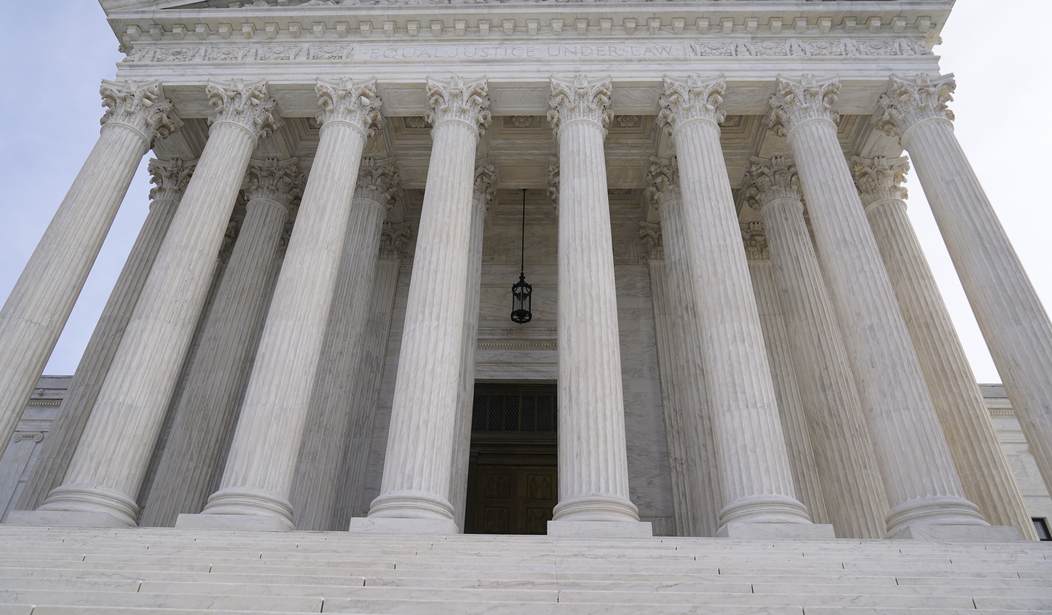The U.S. Supreme Court will likely take another month, perhaps longer, to release opinions in the remaining cases before recessing for the summer. While both sides of the abortion issue are eagerly awaiting the official decision to come out in the Dobbs v. Jackson case, there are also still many more other cases to be handed down.
Data from Ballotpedia of cases and their opinions shows that there are 34 cases where the decision is still "TBD."
In addition to the hot-button issue of abortion with Dobbs, the Court will also rule on the Second Amendment, as it pertains to New York State Rifle & Pistol Association Inc. v. Bruen. Such a case examines New York's proper clause standard that those seeking to acquire firearms in the state must meet before being granted a firearms license.
First Amendment rights are also at hand, with Kennedy v. Bremerton School District, as the Court will examine the establishment clause as it applies in the case of Coach Joe Kennedy, whom the Bremerton School District in Washington State sought to prevent from praying before and after football games on the field, including with students who voluntarily participated.
In Carson v. Makin, school choice is under consideration, as the Court will decide whether the state of Maine can purposefully exclude private religious schools in its private school choice program. Parents have argued that the program, passed by the Maine state legislature, violates their First Amendment rights, including freedom of religion.
The case is also relevant as it applies to the ruling in Espinoza v. Montana Department of Revenue, a 5-4 decision from 2020 that religious schools cannot be discriminated against, as they were with a Montana state law that banned scholarship money from being used toward faith-based schools.
Recommended
Numerous immigration cases have also yet to be decided, including Johnson v. Arteaga-Martinez, as it applies to the rights of non-citizen immigrants detention and bond hearing, which Garland v. Gonzalez will also examine, though that case also examines "the jurisdiction of federal courts to grant classwide injunctive relief in such cases."
And, when it comes to immigration, there's also the major case of Biden v. Texas, which examines the "Remain in Mexico" policy from the Trump administration. A note on "Why It Matters" from Ballotpedia mentioned that this "ruling might also identify limits on presidential discretion regarding immigration policy."
Nevertheless, the Dobbs case still remains arguably the most eagerly watched case, as abortion cases often are, especially ones as consequential as this. A leaked draft opinion from earlier this month revealed that the Court is looking to overturn 1973's Roe v. Wade, which was upheld by 1992's Planned Parenthood v. Casey.
The former case legalized abortion on demand in all 50 states and created a trimester framework, while the latter case created the framework of how a woman must not have an "undue burden" in seeking an abortion.
With Dobbs, the Court will rule on the constitutionality of pre-viability abortion bans, specifically when it comes to Mississippi's 15-week abortion ban. Should the draft be the final decision, and Roe is indeed overturned, the states will be free to decide their own abortion laws.
The Court could release its opinion sooner, but might still wait until June, or even July, as Curt Levey, a constitutional law attorney and the president of the Committee for Justice, told Townhall in a statement.
"The Supreme Court’s decision in Dobbs could come down anytime between this week and the beginning of July. Assuming the protests outside justices’ homes and other political pressure are an attempt to influence the outcome in Dobbs, the Court has an incentive to get the final decision out quickly," Levey pointed out. "On the other hand, there might be a temptation among the justices to issue the Dobbs decision on the final day of the term and then get out of DC for summer vacation."
He also further discussed the thought process of the Court to release decisions when it does. "However, all such speculation assumes that the Court strategically chooses when to release decisions. That runs counter to the Court’s probably-accurate claim that it releases decisions when they’re finished – that is, when the majority, concurring and dissenting opinions have all been completed," he added. "In this case, the dissenters – likely Breyer, Sotomayor and Kagan – have little incentive to rush. So how soon the decision is issued may well lie in their hands. While it’s true that the Court could release one or more of the opinions before all are complete, that would be an extremely unlikely departure from normal procedure."
Waiting until June or even July could be due to safety concerns, as the justices are looking to issue the decision in Dobbs and then take off for the summer. What little assistance the Biden Administration has offered appears to be too little too late, and the U.S. House of Representatives is currently sitting on a bill to offer further protection for the justices that has passed the U.S. Senate already. Democrats in the House are putting the safety of justices at risk as they are looking to also protect the person who leaked the draft opinion, an unprecedented move from the Court, as POLITICO itself noted in being the outlet to report on the leak.
That being said, if the Court does indeed wait, as the justices take their time with finalizing opinions and dissents, it is signaling that it is business as usual, and that the justices will not be bullied or intimidated.























Join the conversation as a VIP Member